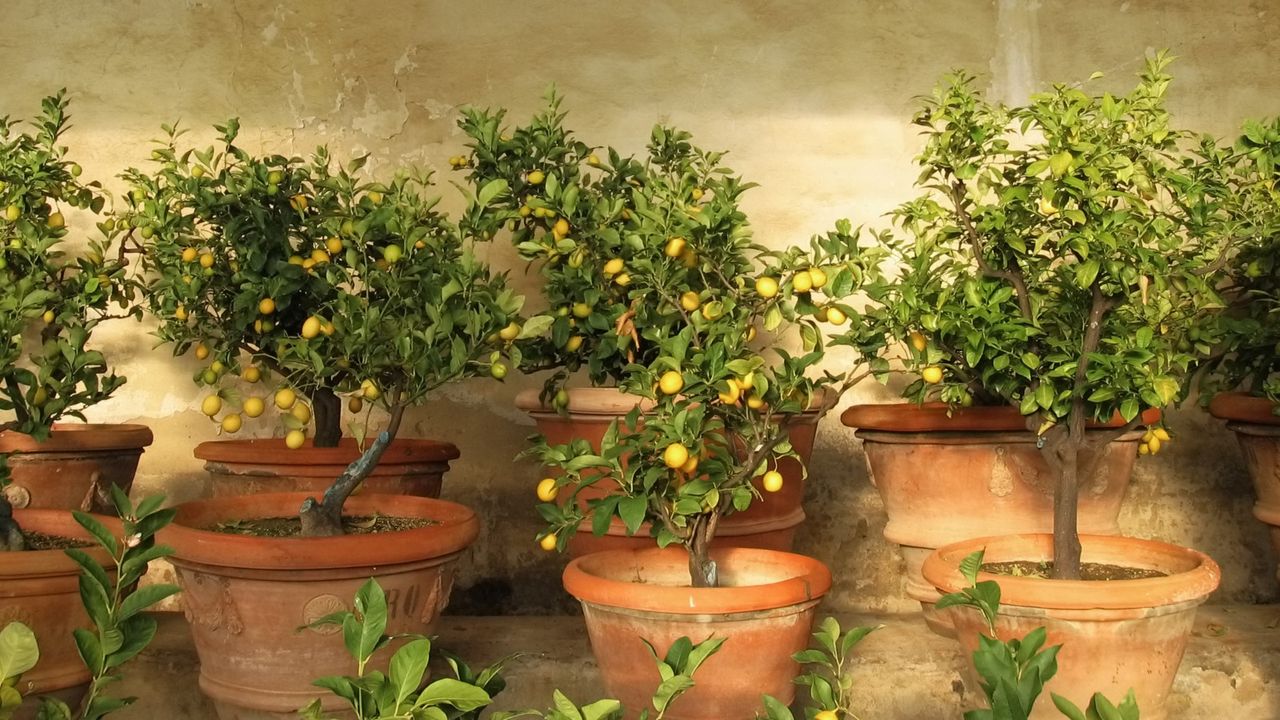
Many of the most popular fruit trees, including apples, pears, cherries, and apricots, can all be successfully grown in pots with little fuss. Most types of fruit trees now come in dwarfing varieties to make them perfectly suitable for growing in containers.
Fruit trees do make a fantastic addition to any backyard. Not only are they great features in a space, but they also offer blossoms in spring, followed by delicious fruits for all your culinary needs.
More modern varieties that can thrive in container gardens now mean you do not need an orchard or lots of backyard space to grow fruit trees and harvest a wide variety of fruits. Even on a dwarf patio fruit tree, you can enjoy a bountiful harvest of delicious fruits.

9 of the best fruit trees to grow in pots
It is important to select the right variety of trees to grow in pots, as not all fruit trees will be able to be grown successfully in a container.
There are small fruit trees or dwarf varieties that make them perfect for pots and small backyards. These fruit trees are grafted onto dwarfing rootstock to restrict their growth. Take care to check any description or label to make sure that the variety will be happy growing in a container.
When growing in pots, trees will need a lot of watering, especially during periods of hot weather. They will also need feeding and pruning fruit trees will also be required, though not as extensively as with full-size mature trees.
1. Apple
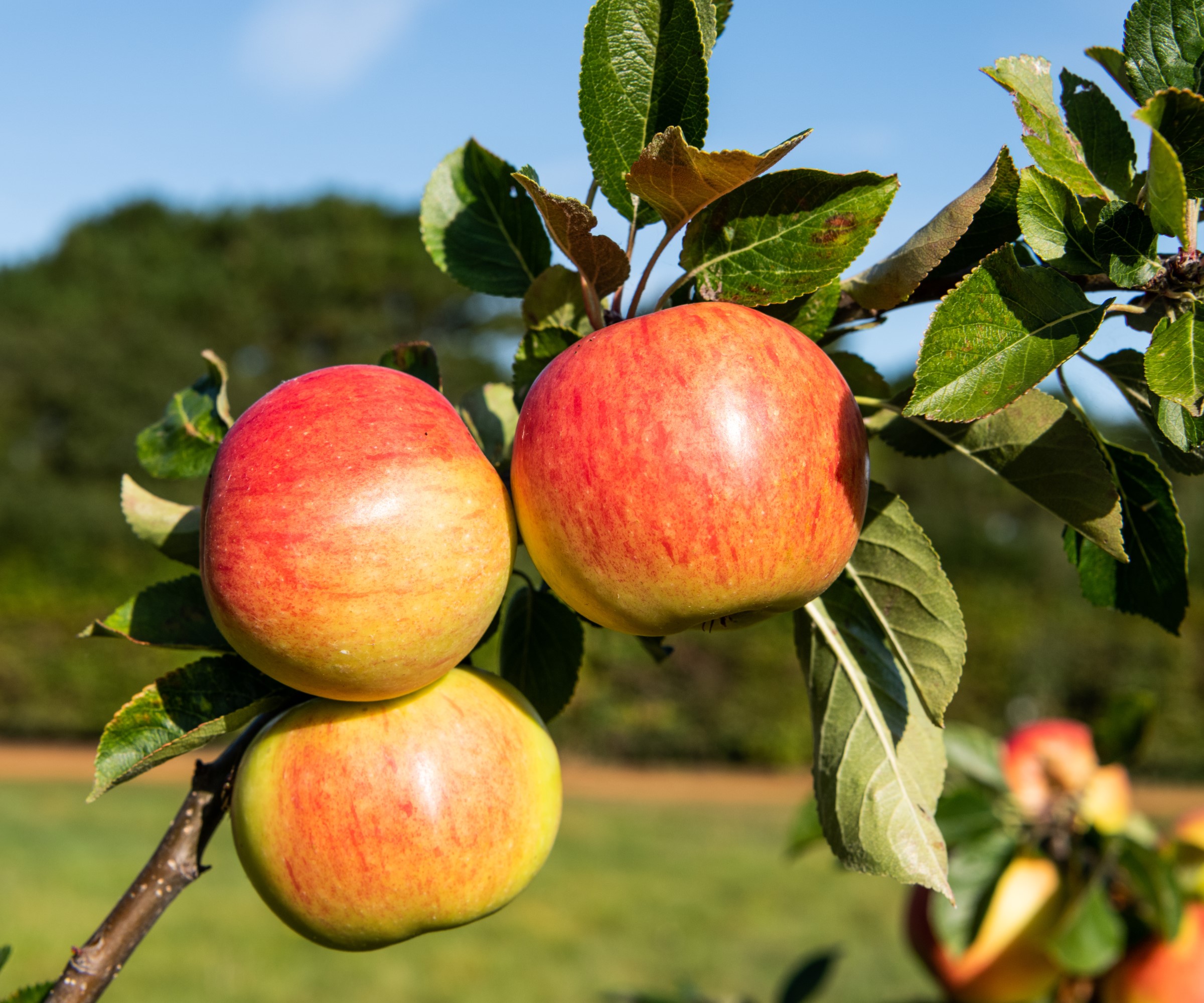
Apples are one of the quintessential backyard fruit trees, and there is a real satisfaction in picking an apple straight from the tree. Apples are ideal for growing in pots, and dwarf rootstocks can provide full-size apples but on compact trees.
They can also be grown in various trained forms in containers, including cordon or columnar, and are one of the best fruit trees to espalier.
Many apples need another tree nearby for pollination; however, if you only want one, then choose a self-fertile variety.
Apple trees will grow happily in USDA Zones 3-8 and do want to be in full sun in the backyard away from strong winds or frost pockets.
Other recommended varieties for planting apple trees in pots include the likes of ‘Discover’ and ‘Falstaff’.
This columnar apple tree grows in an upright shape to provide tangy apples in a small space.
This dwarf apple tree reaches 8 - 10 feet, yet produces full-size fruit and can be grown in large containers.
'Sweet Sixteen' is a small apple tree that produces attractive yellow and pinkish-red streaked apples.
2. Apricot
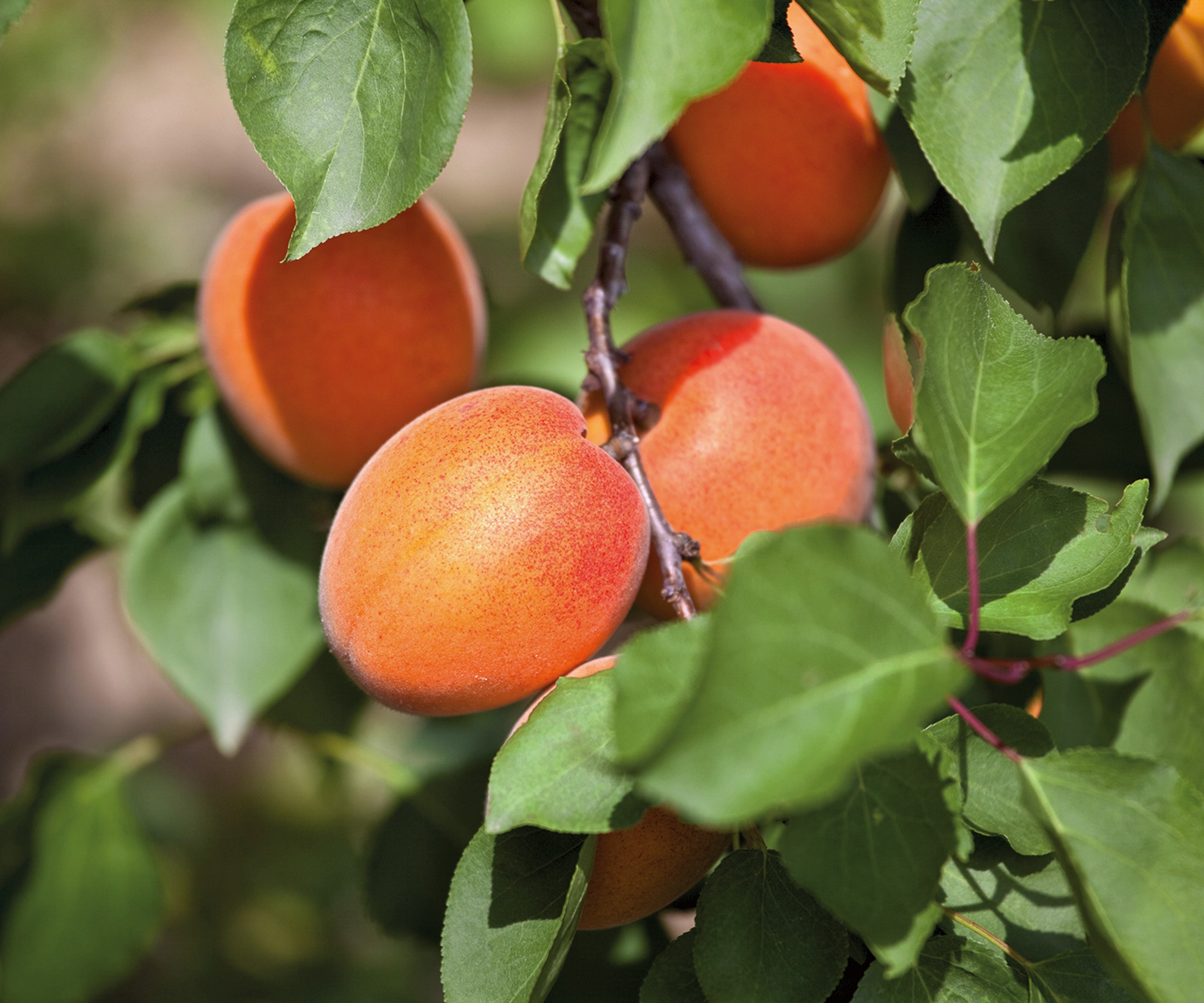
Apricots want a sunny and sheltered site on a patio or deck. Though a hardy tree, they do want some tender care as their early flowers can be vulnerable to spring frosts. It pays to protect them with fleece or move them undercover if a frost is threatening. A failure to protect the blossom will result in no fruits come summer.
Apricots come on dwarfing rootstocks and are self-fertile so you can get delicious ripe peaches from just one tree. A good apricot harvest is dependent on you getting a long and hot summer, but a ripe apricot fresh off the tree is a real delicacy.
While apricots are often seen as a good food to grow in a greenhouse, you can get a good apricot harvest outside if you get consistent temperatures between 65-85˚F during the growing season.
Most apricots are suited to US hardiness zones 5-8 and do need a period of cold dormancy to produce fruit the following year.
Recommended varieties include the likes of Pixie-cot and Petit Muscat.
This compact apricot tree produces some of the sweetest, juiciest apricots you can grow at home.
The Katy Apricot Tree is one of the earliest apricots to ripen and can be harvested in late May to early June.
The Chinese Mormon apricot tree blooms later than other types, making it an ideal variety for colder climates with later spring frosts.
3. Cherry
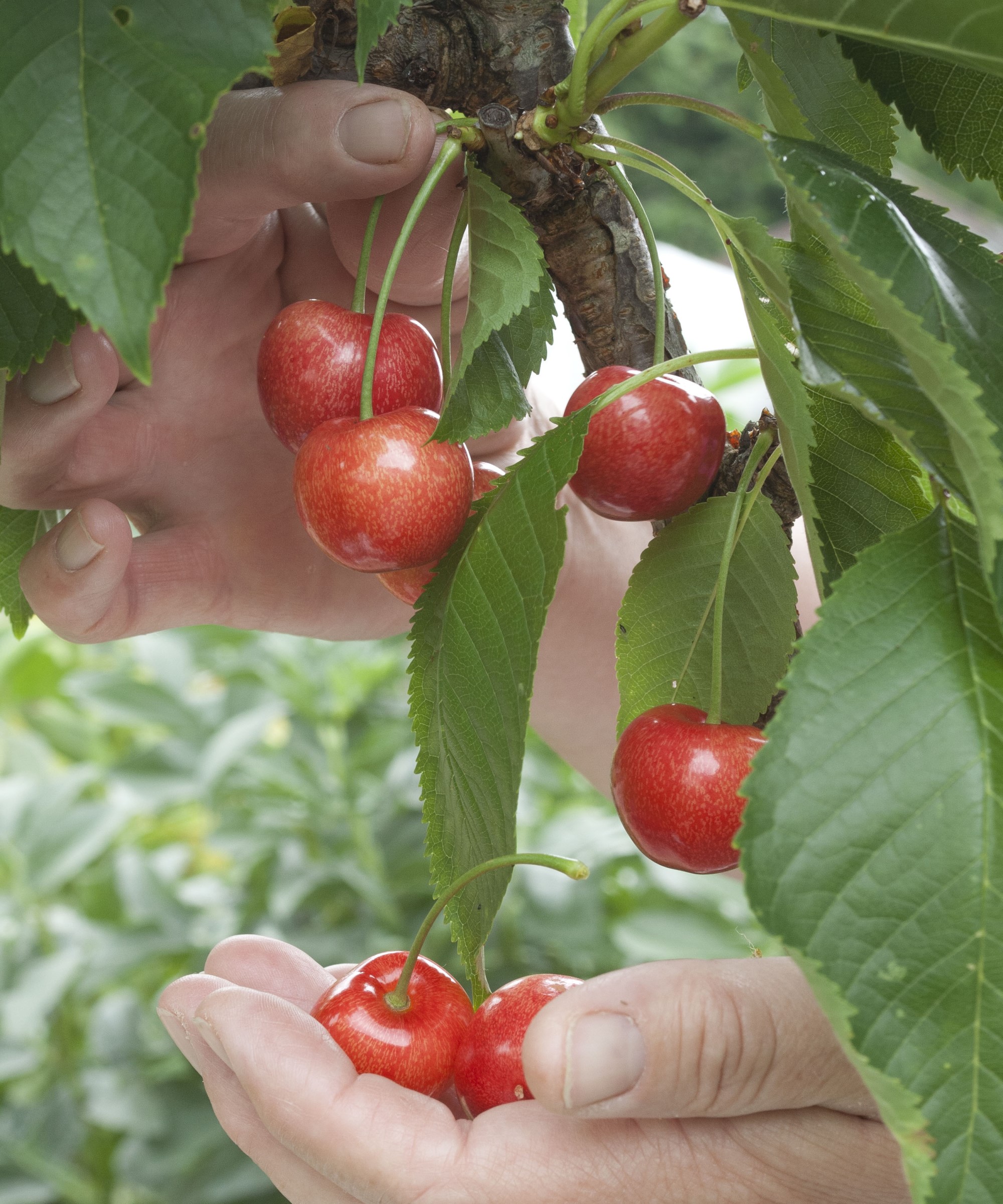
Cherry trees offer a double-whammy of treats, not only do they put on a fantastic display of blossom in spring but follow that up with sweet and glossy summer fruits.
Modern cherry trees are self-fertile and are available on dwarfing rootstocks, there are even varieties specially bred as dwarf trees perfect for patios.
They want a warm and sunny spot and can grow in trained forms, including space-saving columnar shapes or as a fan or cordon against a sunny wall. It is recommended to cover trees with netting to stop any hungry birds from getting to your crop of cherries.
Romeo is a hardy dwarf cherry tree, and the deep crimson fruits are bred to prevent splitting.
This dwarf cherry is perfect for courtyards and containers, providing big yields in small spaces.
This cherry tree grows to only 3-6 feet and produces unique yellow star-shaped and ribbed cherries.
4. Fig
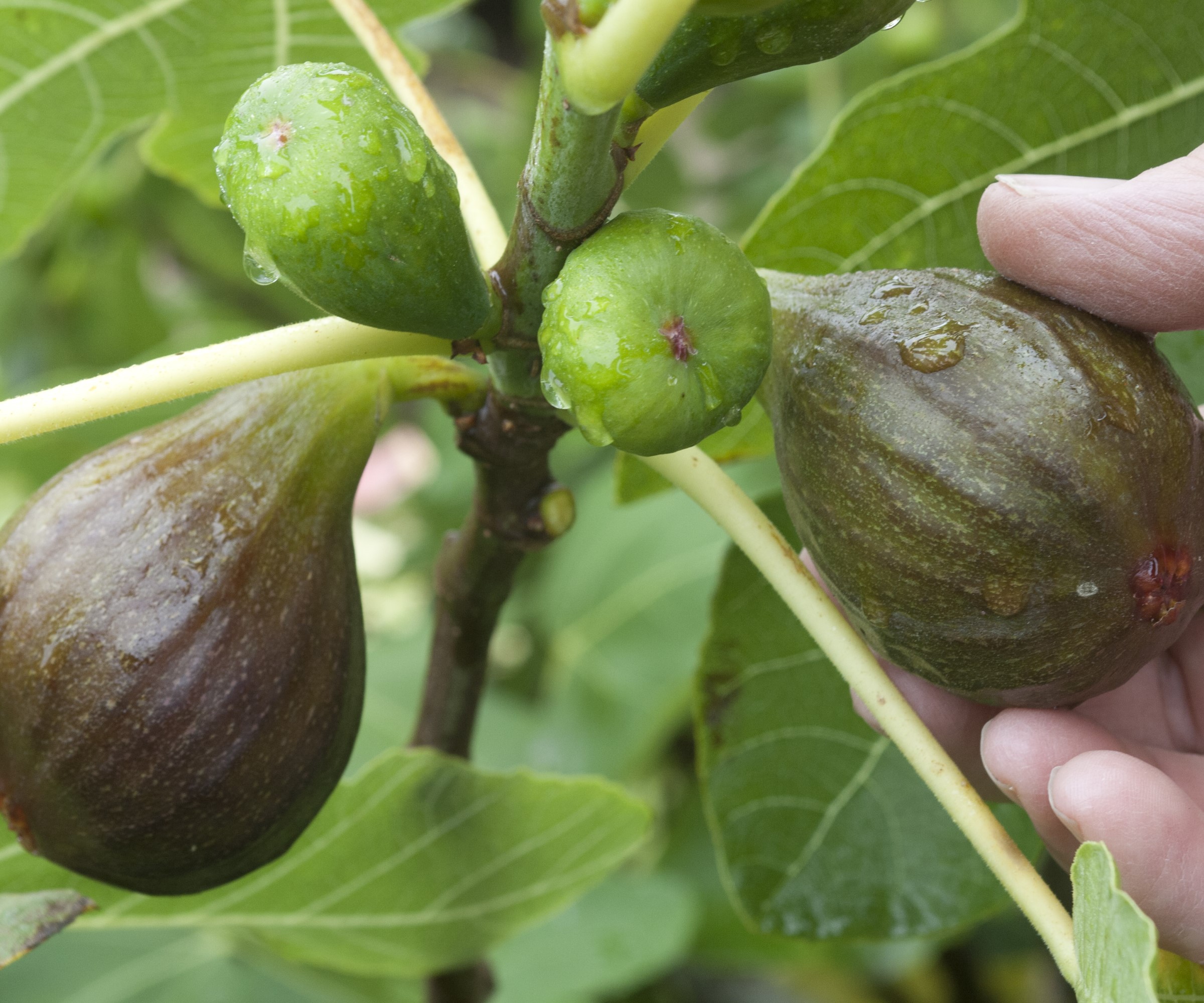
A fig tree can evoke the feeling of a Mediterranean garden and you can get a good crop if you live in either a warm or cooler climate. Figs are typically seen as sprawling trees, but will grow happily in large pots. The restriction that comes from growing in a container helps to keep the tree more compact and stimulates the growth of fruit rather than foliage.
Figs will thrive in USDA Zones 8-10 but will require some extra protection in cold winters to ensure they survive. If you have space indoors, such as a greenhouse or sun room, then moving the fig into a protected environment for winter can help any young figs that formed in summer to ripen.
Little Miss Figgy is a compact fig tree ideal for containers and getting delicious fig harvests in small spaces.
This self-fertile fig tree is cold-hardy down to -10 degrees and reliably produces big yields.
Brown Turkey figs are always a popular variety of fig tree and they can grow successfully in pots.
5. Lemon

Lemons are a hugely popular fruit tree to grow in pots as not only do they evoke memories of sunny summers, but also provide delicate fragrant flowers followed by sweet-scented fruits. Lemon trees can also flower and fruit year-round in ideal conditions.
They can be grown outdoors as a patio plant, in USDA Zones 9 to 11, while you can grow a lemon tree indoors and there are other options to grow citrus inside, where you can bring trees outside from the greenhouse or conservatory for summer until the temperatures start to drop below 50˚F - when a potted lemon tree needs to be brought indoors for winter.
Lemon trees want a long and warm growing season, getting at least 6-8 hours of sunlight a day at temperatures over 68˚F.
The fruits of a Meyer Lemon tree are a cross between sour lemons and sweet oranges.
Eureka lemon trees are ideal for containers and can produce fruit in the first year.
Ponderosa is a mid-sized lemon tree for a patio planter. It can produce fruits as large as a grapefruit with thick, bumpy rinds.
6. Orange
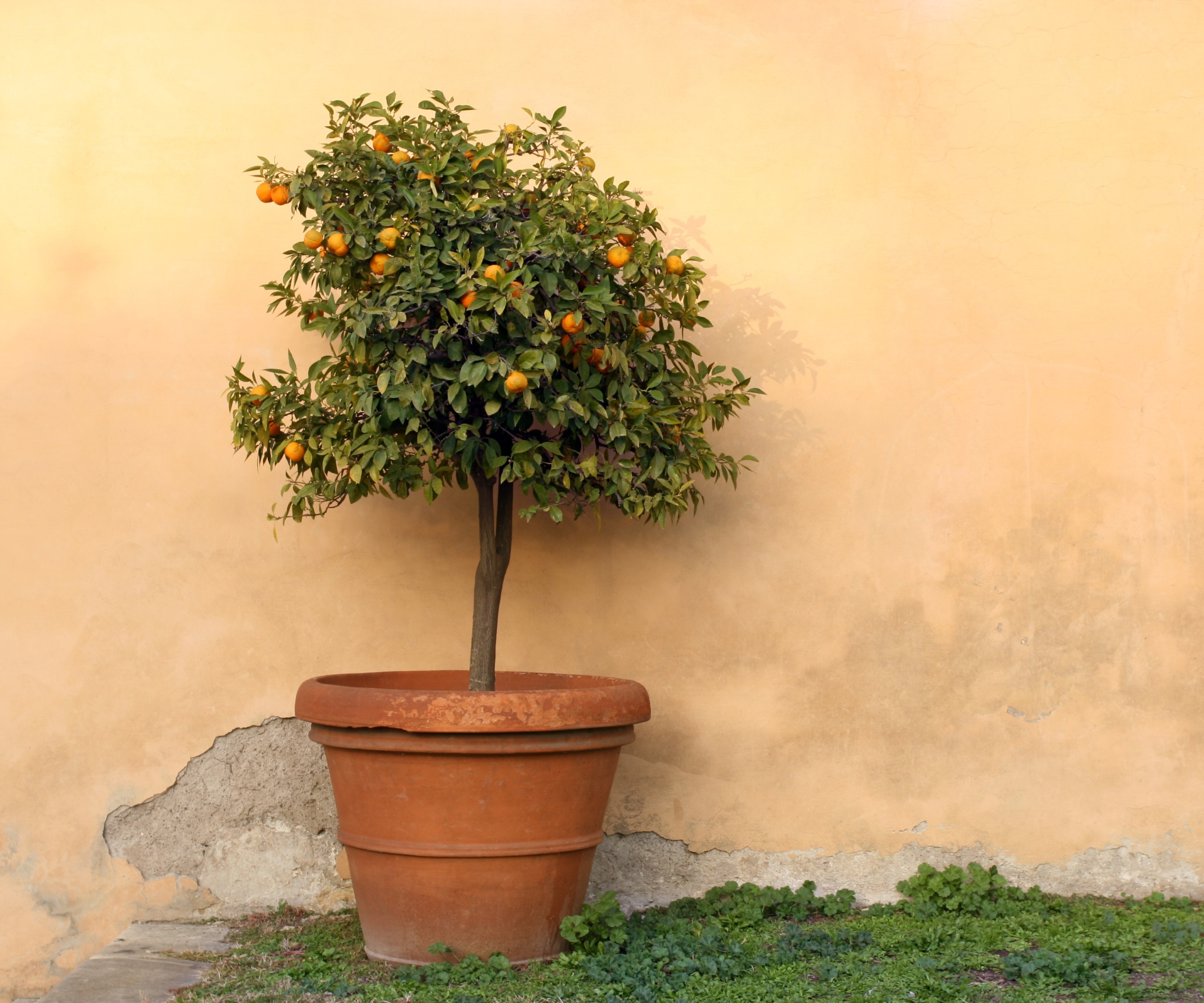
Orange trees can thrive in pots and like warmer climates, they are hardy down to 23˚F and are ideally suited to USDA Zones 8-11.
Oranges want temperatures between 60-90˚F during the growing season to produce a bumper crop of juicy oranges. However, if you live in a cooler climate, then a heated greenhouse or sun room are capable of providing you with strongly scented fruits.
When it comes to citrus tree care, the trees do need to be protected when the temperature drops to around 25˚F, either being moved to a protected area or covered with fleece.
The best orange trees for pots are dwarf cultivars, such as Calamondin, Trovita, or Buddha’s Hand.
The Calamondin orange tree is a mini-orange that produces an abundance of yellow-orange fruits with a slightly tart taste.
A Cara Cara orange is great for containers and produces sweet oranges with unique, bright pink flesh.
Valencia is a staple in orange groves across the US, and the fruits are great for juicing or snacking.
7. Peach
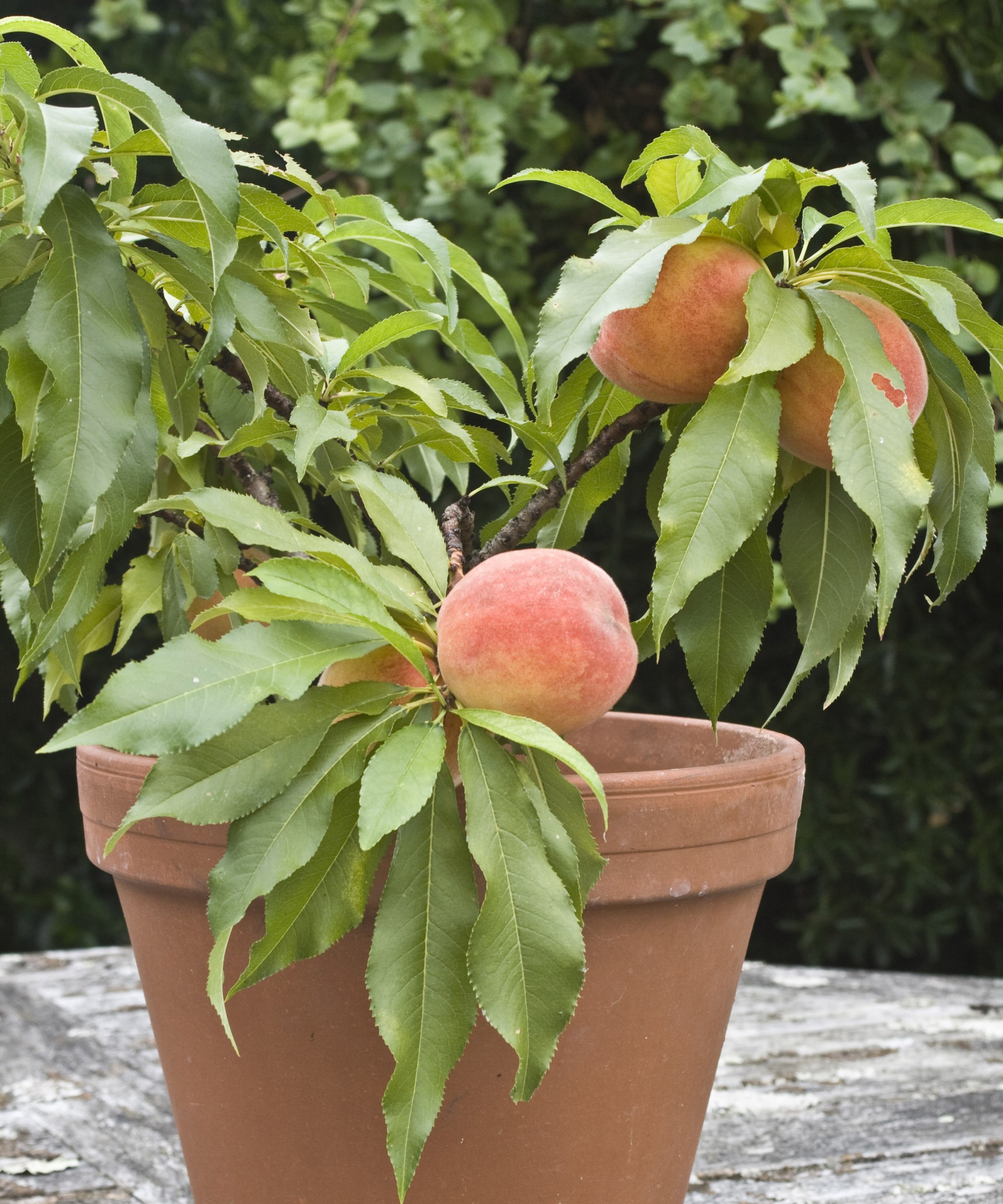
Peach trees want lots of sun to thrive and give a large crop, such as in warmer areas like USDA Zones 5-9. There are dedicated patio peach varieties available that are perfect for small garden ideas. While a dwarf tree is restricted in size, the fruit is not, and the peaches still develop into full-sized fruits.
Peach trees offer a beautiful blossom in spring – the blooms do need protection from spring frosts to ensure fruit – followed by sweet and juicy peaches in the summer.
Peach leaf curl is a common problem for fruit trees, but the issue can be combated by protecting plants from rainfall in winter and spring by moving them undercover.
Other varieties of peach that work in pots include ‘Peregrine’ and ‘Garden Lady’.
This dwarf peach tree is perfect for pots on patios to produce yields of full-sized, flavorful peaches.
Bonfire reaches 4 or 5 feet in height, and its fruits are ideal for baking or canning.
Get large crops of blushed red peaches with bright yellow flush from a miniature tree.
8. Pear
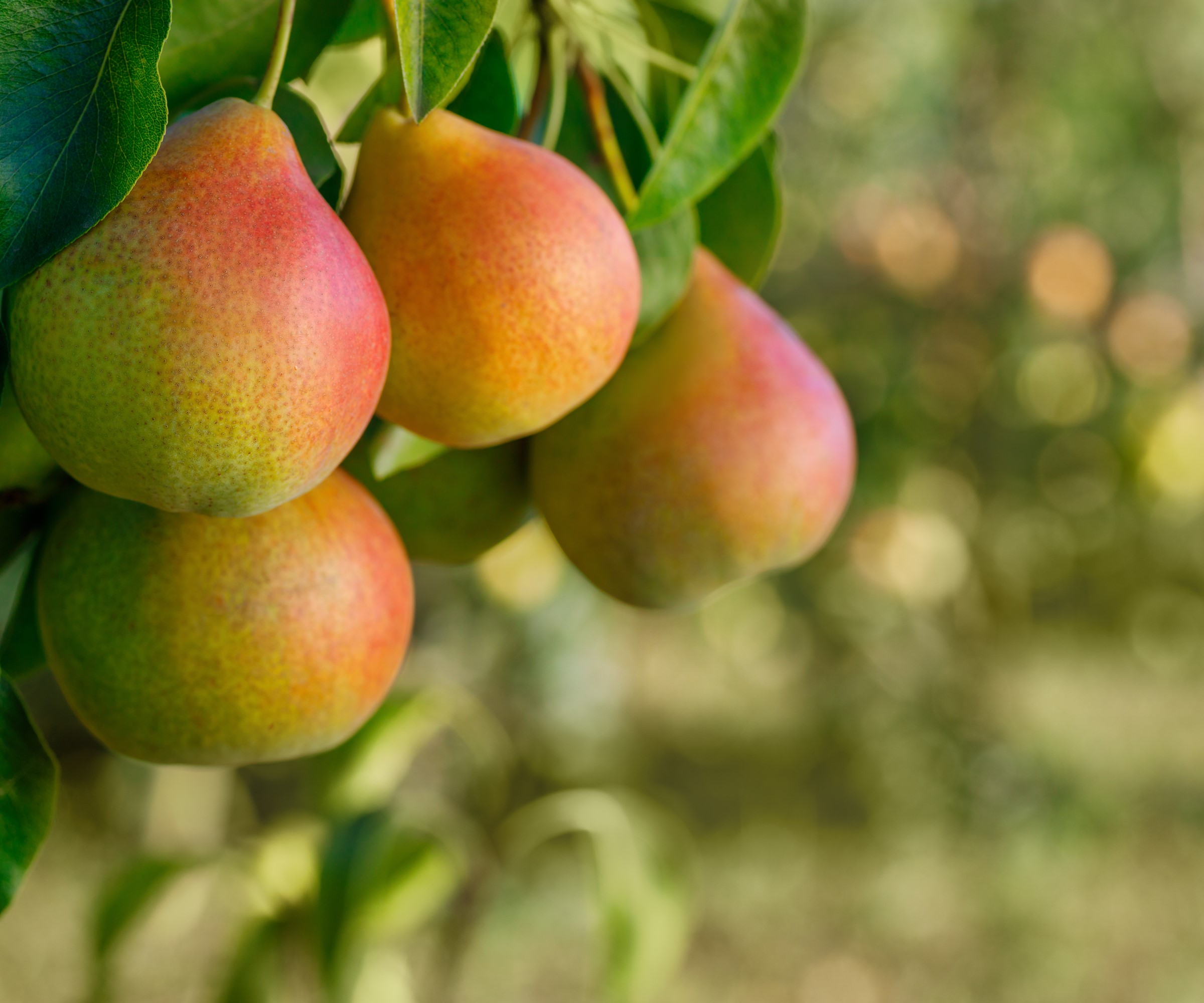
Pear trees are commonly available on dwarfing rootstocks that makes these fruit trees ideal for growing in containers. Even in restricted form, a pot-grown pear tree produces a wealth of spring blossom and a bounty of full-size fruits come harvest time. Some great varieties of pear trees available on dwarf rootstocks include Moonglow, Bartlett, and Seckel.
Pears can also be grown successfully as trained forms including cordons, fans, or espaliers in pots – allowing for lots of fruit in a small space. Pears want protection from wind and any late frosts, and to be located in a warm and sunny spot during the summer. When it comes to maintenance, pruning pear trees in pots is kept to a minimum thanks to the dwarf rootstock.
This compact pear tree produces large and juicy pears, but they are round rather than pear-shaped.
This cold-hardy pear tree produces pears with a rich flavor that are perfect for baking.
Red Bartlett pears are perfect for eating straight from the tree, and easy to grow for beginners.
9. Plum
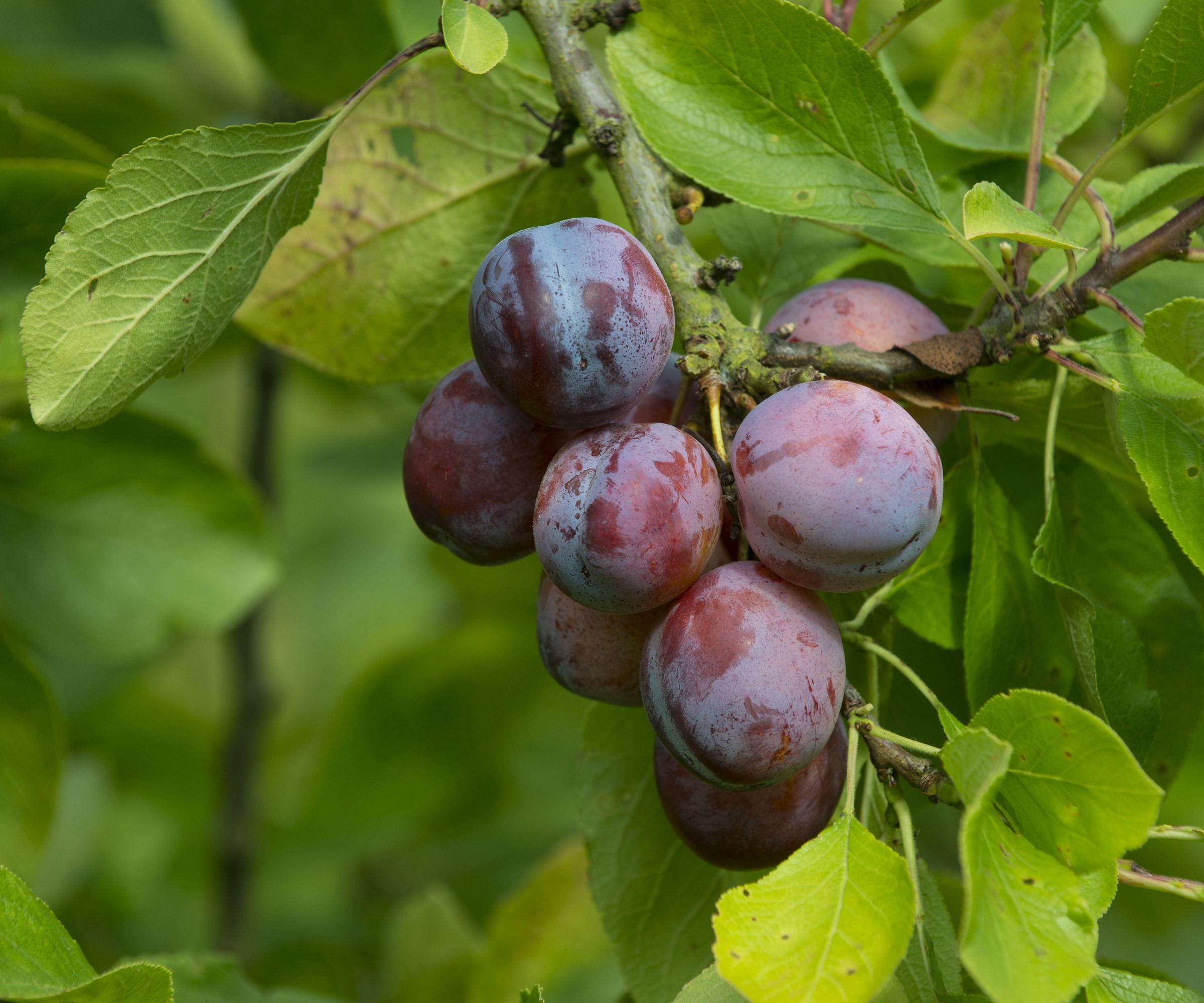
Plum trees are one of the fastest growing fruit trees you can get. They are self-fertile and there are many modern dwarf varieties available to grow in pots. It means you do not need a large kitchen garden to enjoy the glorious plum blossom and juicy fruits come summertime.
Good plum varieties for pots include Johnson, Victoria, and Damson, but make sure they are grafted on dwarf rootstock.
Plum trees in pots want to be placed in a sunny and sheltered position, while they also need their spring blossom protected from late frosts to not diminish the year’s fruits. Plums also grow successfully in trained forms that are great for small backyards.
The compact Hollywood Plum Tree is a naturally dwarf size tree that produces deep red plums in July and August.
Damson trees have dark blue fruits in late summer that are ideal for jams, jellies, and gins.
These mid-season plums have yellow skin blushed with red and a tropical taste, great for enjoying fresh from the tree.
If you are putting together plans for a small garden space, then it is worth considering that fruit trees are ideal for growing in pots. They combine their beauty with the addition of edible fruits, making them a valuable addition to any space.
The modern varieties of fruit trees mean even more types can now be grown in pots, such as growing a persimmon tree in a container, with new dwarf varieties available. This opens up the opportunities for more people to enjoy fruits from their own backyard, or grown on a small patio, deck, or balcony. Either eaten fresh from the tree, or used in the kitchen, once you have sampled homegrown fruit you will be hooked as it surpasses any you get from the store.







